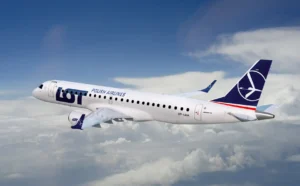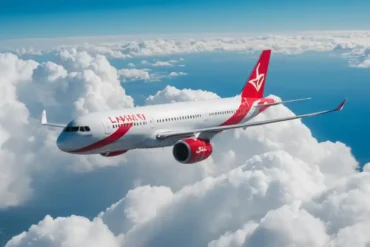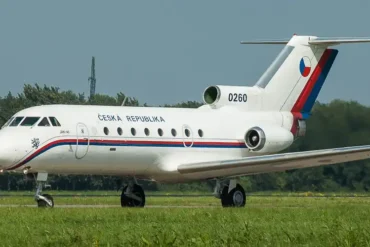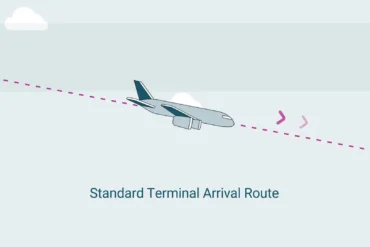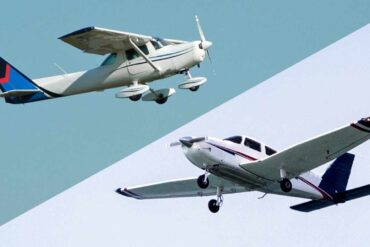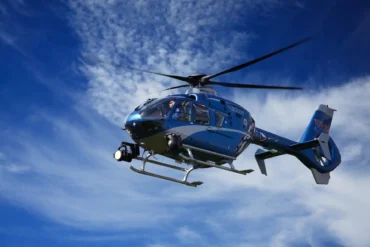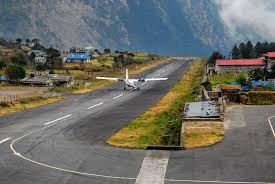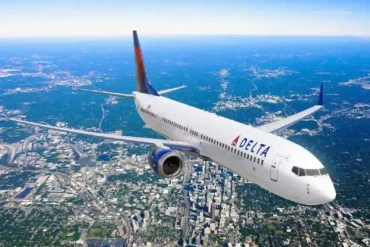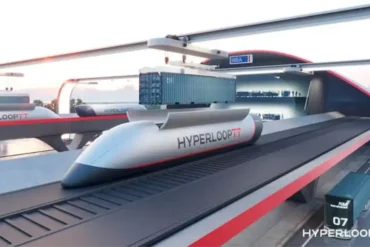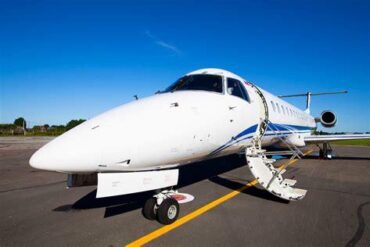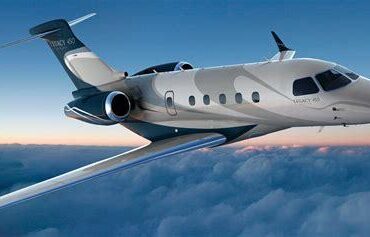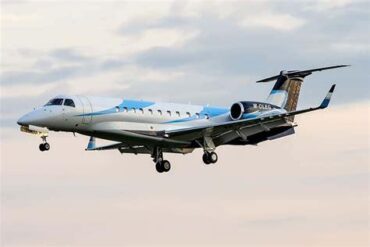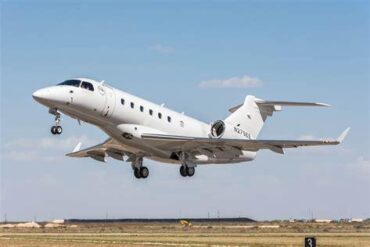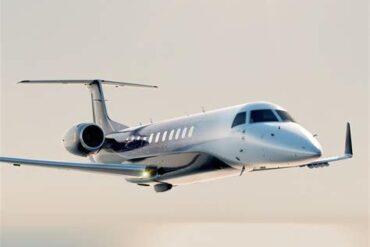Hey there! Let’s talk about the Embraer 190. This plane is a real high-flyer, reaching up to 41,000 feet! It can travel an impressive 2,450 nautical miles, making it perfect for global regional flights. And get this – it can zoom along at 447 knots (that’s 515 mph to you and me). Pretty zippy, right?
The Embraer 190 is like the taller sibling in the E series family. It’s a hit with regional airlines and can fit up to 124 passengers. It’s powered by two General Electric CF-34 engines that pack quite a punch. Compared to its relatives, it’s got a longer body, bigger wings, and a larger tail.
Embraer came up with the E190 because they wanted to make a bigger splash in the regional aircraft market. They’d already had success with their smaller planes, the ERJ135 and ERJ145. So, they thought, “Why not go bigger and better?” They showed off both the E170 and E190 at the Paris Air Show back in 1999.
What makes the E190 special? Well, it’s got a roomier cabin than its predecessors. Plus, it’s got some cool tech upgrades. For example, its fuel system helps the engines run more efficiently, which means less fuel burned and fewer trips to the mechanic. It can cruise at 447 knots (515 mph) and travel 2,450 nautical miles (2,820 miles) without stopping. That’s Embraer’s way of showing they’re always pushing for better.
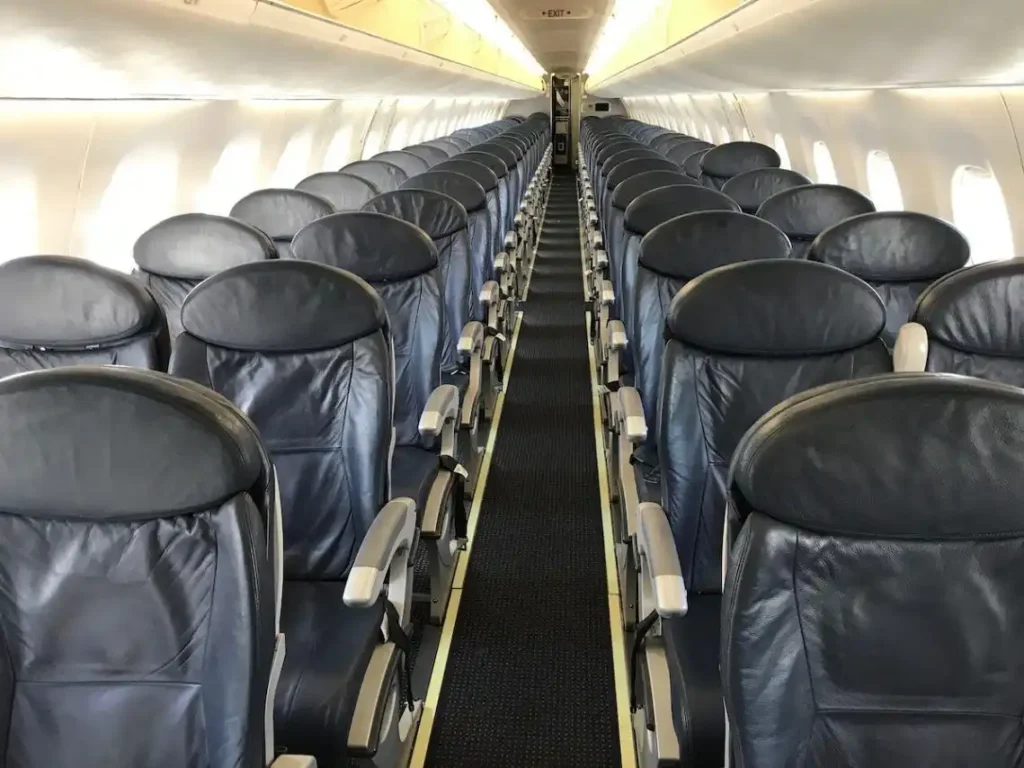
The E190 took its first flight in March 2004. JetBlue, the New York-based budget airline, was the first to get on board. They ordered 100 planes in 2003 and got their first one in 2005. The plane started flying passengers in 2006, with seats for 100 people arranged two-by-two.
In 2013, Embraer announced they were working on the next generation of E-jets, called the E2 family. These new planes would be even better than the E175, E190, and E195. They’d have more fuel-efficient engines, advanced controls, updated cockpit tech, and a fancy new interior. The first E190-E2 took off in May 2016 and started flying for Widerøe, a Norwegian airline. Right now, there are 20 E190-E2s flying around the world.
While they’re not making the original E190 anymore, the E190-E2 is still going strong. So, why do airlines and pilots think the E190 is so great? Let’s find out!
Sky-High Service Ceiling
The Embraer 190 boasts an impressive service ceiling, allowing it to soar up to 41,000 feet. This high-altitude capability brings numerous advantages to the aircraft’s performance and efficiency.
At these lofty heights, the air becomes noticeably thinner. While this might sound challenging, it actually benefits the E190 in several ways. The thinner air allows the engines to perform better, enabling the plane to achieve higher speeds while consuming less fuel. Additionally, the reduced air density results in less drag on the aircraft, further enhancing its efficiency and helping airlines save on fuel costs.
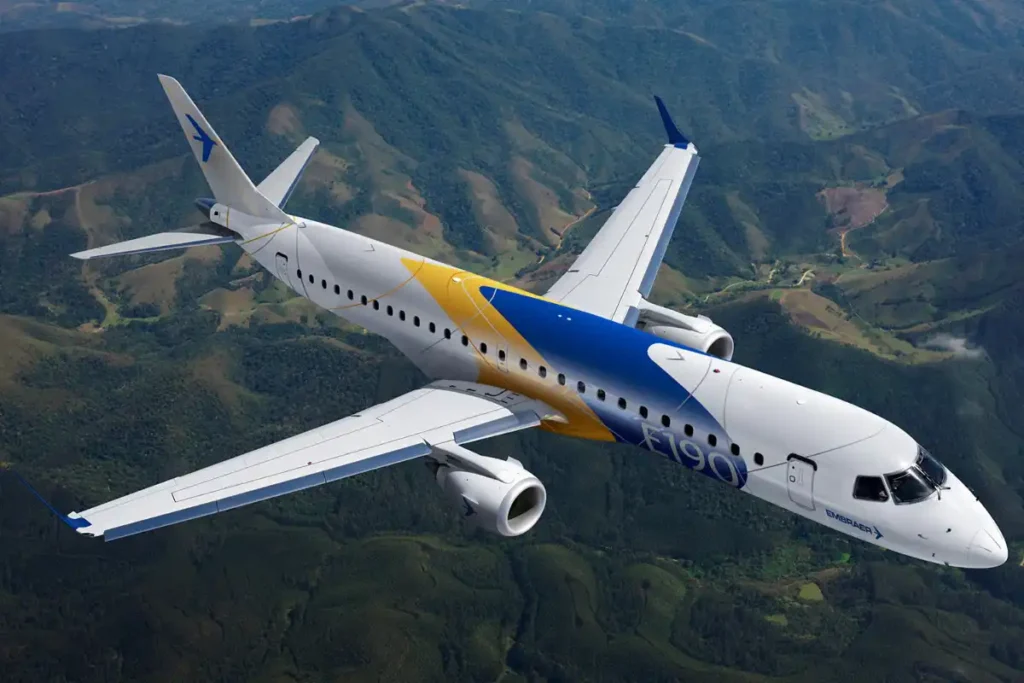
Flying at such altitudes isn’t just about performance – it also contributes to passenger comfort. The E190’s ability to reach 41,000 feet means it can easily cruise above most weather disturbances. This results in a smoother, more comfortable ride for passengers, as the aircraft can avoid turbulence often found at lower altitudes.
What’s more, the E190’s high-flying capabilities give it an edge over some competitors. For instance, it can reach altitudes beyond those of the Boeing 717, which has a maximum ceiling of 37,000 feet. This extra altitude provides the E190 with greater flexibility in route planning and weather avoidance.
Goes the Distance: Traveling up to 2,450 nautical miles
| Aircraft Model | Range in Nautical Miles (NM) | Range in Kilometers (km) | Range in Miles (mi) |
|---|---|---|---|
| E-170 | 2,150 | 3,982 | 2,470 |
| E-175 | 2,200 | 4,074 | 2,500 |
| E-190 | 2,450 | 4,537 | 2,820 |
| E-195 | 2,300 | 4,260 | 2,600 |
For a small single-aisle plane, the E190 can really go the distance. It can fly 2,450 nautical miles without stopping, which makes it great for regional flights all over the world. It can link North America to the Caribbean or fly from Europe to the Middle East or Africa.
The best part? Embraer says it can fly that far even when it’s full of passengers. It can carry up to 12,971 kg (28,596 lbs) of fuel, which is key to its impressive range. It’s also really flexible – it can take off and land on shorter runways, so it can use smaller airports too.
The E190 isn’t just about distance – it’s speedy too. It usually cruises at 447 knots (515 mph) but can reach up to 470 knots (541 mph) when it needs to. It can carry up to 28,800 lb (13,063 kg) of cargo and people, and its two GE CF34-10E engines give it plenty of power to zip along its flight path.
The E190 can take off weighing up to 51,800 kg (114,199 lbs), but it’s actually pretty light when empty – just 27,837 kg (61,370 lbs). This means airlines can fit more passengers on each flight.
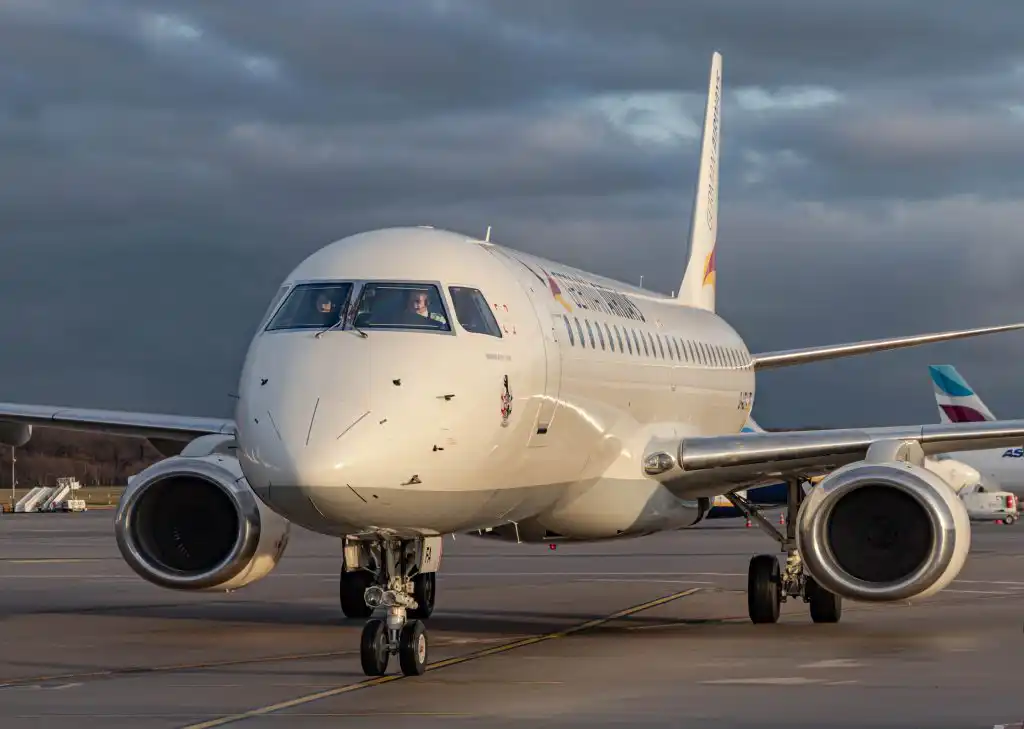
Here’s a cool fact from German Airways: the E190 keeps the air pressure in the cabin lower than any other plane in its class. Even when you’re flying at 41,000 feet, it feels like you’re only at 5,800 feet. This means you’ll feel more comfortable and less tired after your flight. The cabin is nice and roomy too – it’s 6 feet 7 inches high and almost 9 feet wide. This helps keep things quiet, and the new E2 family will be even quieter!
The E190 has plenty of room for seats. In a single-class setup, you can fit between 100 and 114 passengers. If you want two classes, you can fit up to 96 people. Pilots and airlines love the E190 because it’s reliable and has a great safety record. That’s why so many are ordering the new E2 family planes.
